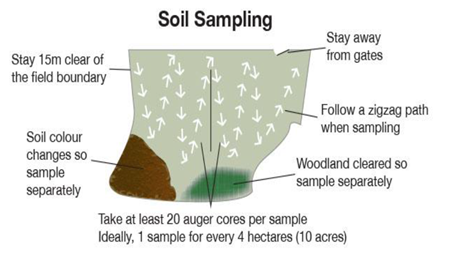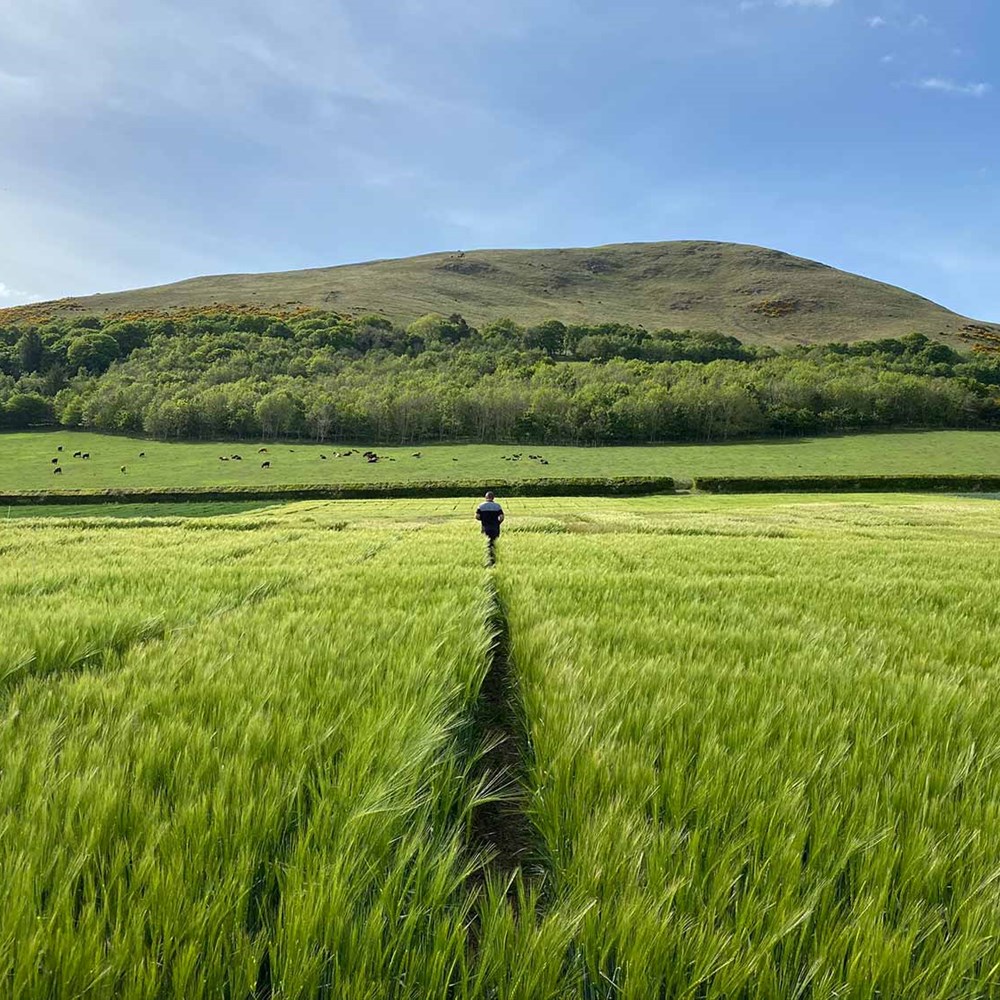Soils analysis
Over fertilising wastes money and can cause environmental problems, while under fertilising can cause loss of yield. Economic returns from fertilisers can only be achieved by taking into account the soil's natural fertilising potential.

Soil analysis provides the base fertility level of a soil. With this information it is possible to plan lime and fertiliser applications to take into account the soil's natural nutrient resource.
Over fertilising wastes money and can cause environmental problems, while under fertilising can cause loss of yield. Economic returns from fertilisers can only be achieved by taking into account the soil's natural fertilising potential.
Soil pH is one of the most important soil properties. If pH is not correct then yield can be affected. Soil analysis will determine the actual pH of the soil and the amount of lime required to adjust the pH to a suitable level for plant growth. Soil analysis can also identify whether crop growth could be restricted by trace element problems and determine the necessary treatments required.
View full test list.
How to take a soil sample
The results of any soil analysis are only as good as the samples taken. Correct soil samples takes time, but following the guidelines detailed here will ensure that this time is not wasted. To take a soil sample you will need:
-
A sampling tool (preferably a soil auger or corer)
-
A bucket
-
Sampling bags and a waterproof marker pen
Detail sampling guidelines
Samples should not be taken within two years of applying lime or within two months of applying a compound fertilizer, organic manure or more than 50 kg/ha nitrogen.
Large fields, even if they appear uniform, should ideally be sub-divided into 4 ha (10 acre) units and sampled separately. Separate samples should also be taken from areas which were manured differently, or which have different soil types or topography, even if there is only one crop.
Permanent grassland should be sampled to 10 cm and arable land (including short-term rotation grass) to plough depth 20 cm.
If using a spade, remove a slice of soil about 2.5 cm thick to sample depth and collect in clean bucket. Further slices should be taken in the same way from different parts of the field, as shown in the diagram below, until about 20 have been collected. Place all samples in the bucket.
When using an auger, it should be twisted into the soil to sampling depth and pulled out. All the soil adhering to it should be carefully transferred to the bucket. Further cores should be taken from different parts of the field, as shown, until about 20 have been collected.
Write the field name, farm name and address in the space provided on the sampling bag before it is filled. The sample should be thoroughly mixed in the bucket before taking a representative sample to fill the bag two-thirds of the way – this gives the lab enough sample to perform the analysis, whilst also minimising the risk of the sample bag spilling in transit. Large stones, roots and plant material should not be placed in the bag.
Please remember to send a copy of your registration details and analysis requirements when you submit samples to the laboratory.
Avoid:
- Headlands
- Near gateways
- Areas where lime or manure has been previously been dumped
- Areas where livestock congregate
Find out more about our services

SAC Consulting
Our consultants in 25 offices across Scotland and northern England turn research into advice and advantage for business and public sector alike.


Vet & laboratory services
Our leading experts provide support to clients in areas animal disease, diagnosis and surveillance.
